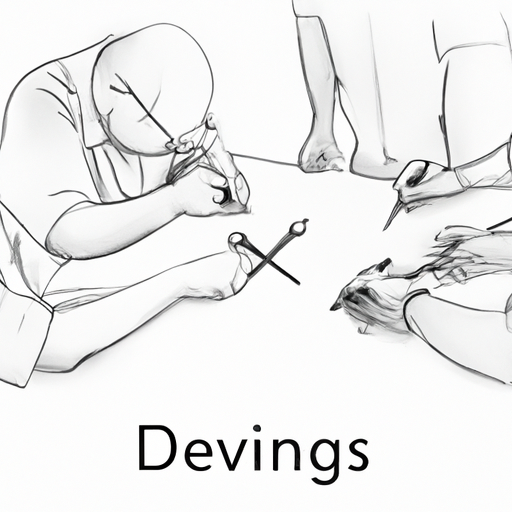This section discusses active and passive recruitment methods, highlighting their strategies, benefits and limitations. It also introduces the hybrid approach, which combines active and passive techniques to reach a larger number of candidates.
In today’s competitive job market, finding top talent is a priority for every organization. However, traditional recruitment methods may not always yield the desired results.
This has led tothe rise of two distinct approaches to active and passive recruiting. Understanding the difference between these two strategies is crucial for organizations that want to attract and retain high-quality candidates. In this article, we’ll explore the strategies and techniques involved in active and passive recruiting, the benefitsand their limitations for each approach, and ultimately which method is best for your organization.
Additionally, we will cover a hybrid approach that combines the strengths of active and passive recruiting for optimal talent acquisition results.
-
- 1.Understanding active recruiting strategies and techniques for proactive talent acquisition
-
- 2.The power of passive recruiting using employer branding and networking to attract candidatestop
-
- 3.Advantages and disadvantages Comparing the benefits and limitations of active and passive recruitmentmethods
-
- 4.Active versus passive recruitment.Which approach is right for your organization?
-
- 5.Unveiling the hybrid approach that combines active and passive recruiting for optimal talent acquisition results
1. Understanding active recruitment strategies and techniques for proactive talent acquisition
Active recruitment refers to the proactive approach taken by organizations to actively seek and hirepotential candidates for open jobs.It involves a set of strategies and techniques aimed at attracting, sourcing and recruiting top talent. Unlike passive recruitment, where employers wait for candidates to apply, active recruitment allows companies to take control of the recruitment process by actively contacting potential candidates.
One of the main strategies used in active recruitment is to build a strong employer brand. This involves creating a positive reputation and image for the organization, which attracts potential candidates even before the jobs become available.available. Creating an employer brand can be done through various means, such as showcasing company culture, employee testimonials, and highlighting unique perks and benefits.
Another technique used in active recruiting is the use of networking platformssocial networks to target and engage with potential candidates. Platforms such as LinkedIn, Twitter and Facebook provide opportunities for companies to showcase their job openings, network with industry professionals and actively search for qualified candidates. Through active engagementwith people who possess the desired skills and qualifications
2.The Power of Passive Recruiting Using Employer Branding and Networking to Attract Top Candidates
Passive recruiting is a powerful strategy that leverages employer branding and networking to attract top candidates.Rather than actively seeking candidates, passive recruiting involves building a strong employer brand and networking to attract naturally talented individuals.
One of the key components of passive recruiting is building astrong employer brand. This involves developing a reputation as a desirable workplace and showcasing the unique aspects of the organization that make it attractive to potential candidates. By highlighting company culture, benefits, career development opportunities and other compelling factors, recruitingpassively can attract candidates who may not have actively sought out new opportunities.
Employer branding can be done through various channels, including social media, company websites, and employee testimonials.Using these platforms allows organizations to showcase their values, mission and overall work environment, giving potential candidates a glimpse of what they would or would work for the company. This transparency helps attract people who align with the culture and valuescompany, increasing the likelihood of finding top talent.
Networking is another
3.Advantages and Disadvantages Comparing the benefits andlimitations of active and passive recruiting methods
Active and passive recruiting methods have their own set of benefits and limitations.passive.will depend on various factors.
Active recruiting involvesactively searching for potential candidates for open positions. This approach usually involves posting job ads, attending job fairs, contacting candidates directly, and actively searching for suitable candidates on various platforms. Active recruiting requires proactive interaction with potential candidatesand actively promoting job opportunities.
Passive recruiting, on the other hand, focuses on attracting candidates who are not actively looking for new job opportunities. Instead of actively seekingcandidates, this approach involves creating a strong employer brand and cultivating a positive reputation in the market.
Passive recruitment is based on candidates approaching the organization based on the reputation and visibility it has established. This can beaccomplished through activities such as employer branding campaigns, networking events and maintaining a strong online presence.
Choosing between active and passive recruitment depends on different
5.Unveiling the hybrid approach that combines active and passive recruiting for optimal talent acquisition results
In today’s competitive job market, companies are constantly looking for innovative ways toattract and acquire the best talent. While active and passive recruiting have long been recognized as two distinct approaches, a hybrid approach that combines the best of the two strategies is gaining popularity among recruiters.
Combining active recruiting techniquesand passive, companies can optimize their talent acquisition efforts and increase their chances of securing the best candidates for their organization.
The hybrid approach to recruiting involves actively sourcing candidates, leveragingalso the passive.talent acquisition techniques. This means that recruiters not only actively seek out potential candidates through job postings, resume databases and social media platforms, but also create a compelling employer brand andestablish a strong online presence to passively attract qualified professionals.
One of the key advantages of the hybrid approach is the ability to cast a wider net and reach a larger pool of candidates.Only active recruiting can limit the talent pool to those people who are actively looking for new opportunities, while only passive recruiting can lose highly qualified people who are not actively looking for a job
In conclusion, understanding the difference between active and passive recruiting is crucial for organizations that want to attract top talent. Active recruiting involves proactive strategies and techniques, such as job postings. work and direct contact, to actively seek candidates.
Passive recruiting,on the other hand, it focuses on building employer branding and networking to attract candidates who may not be actively looking for a job. Both approaches have their benefits and limitations, and the decision on which approach to use depends on your needs andspecific goals of the organization.
However, a hybrid approach that combines elements of both active and passive recruitment can lead to optimal talent acquisition results. By combining proactive strategies with a strong employer brand and networking efforts, organizationscan attract a larger pool of qualified candidates and increase their chances of finding the best fit for their team.
Ultimately, organizations should carefully evaluate their resources, goals, and target candidate pool to determine the mosteffective approach to their talent acquisition efforts.
…..






